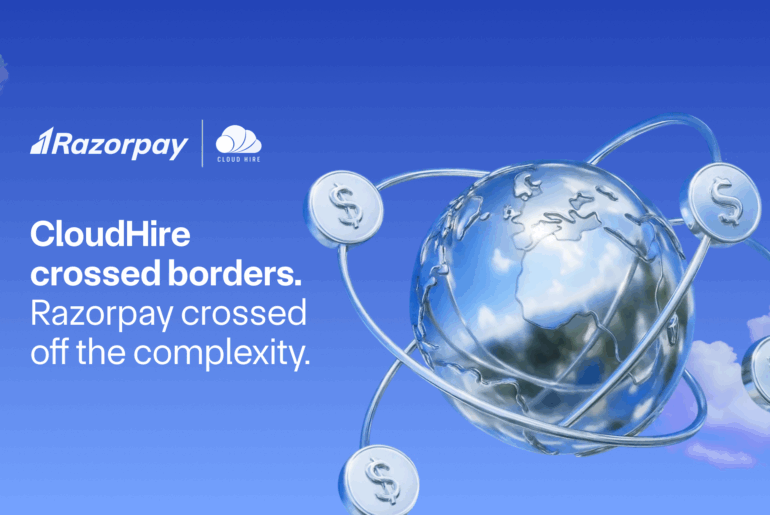A Terminal ID (TID) is a unique eight-digit code that identifies your payment terminal. When customers pay electronically, this code tracks the transaction through the payment network. TIDs follow RBI regulations and play a crucial role across payment systems, including UPI, RuPay, and payment gateways like Razorpay.
Table of Contents
What is a Terminal ID (TID) Number?
A terminal identification number is a unique identifier that shows where a payment came from. When your customer pays at your store, the TID tells payment processors exactly which terminal handled the transaction. This matters for your business because it creates a clear trail for every sale.
If you run a large retail chain in India, TIDs help you track sales across all your locations. Each store might have several terminals, and each one has its own TID. This system lets you see which branches perform best and spot issues with specific machines.
A bank or payment aggregator assigns TIDs when you set up payment services. Companies like Razorpay or PayU provide these codes for both physical and online terminals. When managing multiple terminals, the TID becomes crucial for tax filing. You’ll need to reconcile transactions from all your TIDs when preparing GST returns or during financial audits.
TID VS MID: What’s the Difference?
|
Feature |
Terminal ID (TID) |
Merchant ID (MID) |
|---|---|---|
|
Definition |
A unique code that identifies each payment terminal or POS device you use in your business. |
A unique identifier assigned to your business that links all your payment processing activities. |
|
Purpose |
Tracks transactions from specific devices in your store or website. |
Identifies your entire business as a merchant entity to banks and processors. |
|
Length |
Usually 8 characters (mix of numbers and letters). |
Typically 15 characters (mix of numbers and letters). |
|
Assignment |
Provided by your payment processor when you set up a new terminal. |
Given by your acquiring bank when you open a merchant account. |
|
Real-world example |
An Indian clothing retailer with stores in Delhi and Mumbai has different TIDs for each location’s payment devices. |
The same retailer has one MID that connects all store locations to their bank account. |
Your TID shows which specific device handled the transaction, while your MID ensures the money reaches your business account. If you run an online marketplace with warehouses in multiple cities, each fulfillment center might use different terminals (TIDs) while operating under your single company identifier (MID).
What’s the Purpose of a Terminal ID (TID) Number?
1. Transaction Tracking
A TID number tracks every transaction that passes through your payment device. It serves as a digital fingerprint that connects each payment to its specific terminal.
2. Multiple Terminal Management
For businesses with multiple payment machines, TIDs help manage all terminals under one merchant account smoothly.
3. Dispute Resolution
When issues arise, your TID proves invaluable. It helps resolve chargeback disputes by pinpointing exactly where a transaction occurred.
4. Payment Routing
Banks and payment networks use this identifier to route funds correctly through the complex payment ecosystem. This becomes important when investigating potential fraud cases.
5. Tax Compliance
TIDs also connect to your GST invoicing system, streamlining tax compliance.
6. Regulatory Compliance
The Reserve Bank of India mandates TIDs as part of its digital payment security guidelines. This makes them essential for regulatory compliance.
How to Find Terminal ID Number for your ATM and POS?
On most POS terminals, you’ll find the TID by accessing the settings menu and looking for device information or terminal details. Many payment terminals also print the Terminal ID on receipts, usually near the top or bottom of the slip.
If you use a mobile payment app, you can typically locate your TID in the account settings or merchant profile section. Your payment processor or acquiring bank can also quickly provide this information when you contact their customer support team. Terminal manuals also contain specific instructions for locating your TID, so check these resources first.
For Indian merchants, you can retrieve your Terminal ID through your RBI-approved POS provider’s merchant portal or by calling their dedicated support line. Major Indian payment gateways also display merchant Terminal ID on dashboards under account details or terminal management sections.
Are Terminal ID Numbers Secure?
Each TID is unique to your specific terminal and impossible to duplicate. This security design helps track your transactions accurately and significantly reduces fraud risk. When you process payments, your TID is encrypted, protecting sensitive data as it travels between systems.
Payment processors and banks implement robust security protocols that safeguard your TID during transaction processing. These measures align with the RBI’s strict digital payment security guidelines for POS terminals.
TID also plays a crucial role in fraud detection across the payment ecosystem. When unusual activity occurs, authorities can trace transactions to specific terminals. This makes it easier to investigate issues and resolve chargebacks.
While your Terminal ID offers strong protection, you should still follow security best practices. Keep your payment terminals updated, use secure networks, and limit TID access to trusted staff members only.
How Do Terminal ID (TID) Numbers Help Banks and Processors?
Terminal ID (TID) numbers serve as unique identifiers assigned to individual payment terminals or devices. These numbers play a crucial role for banks and payment processors by enabling accurate tracking, management, and security of electronic transactions. Here’s how TIDs help banks and processors:
1. Transaction Tracking and Identification
- Each payment processed through a terminal is tagged with its unique TID. This allows banks and processors to know exactly which terminal initiated the transaction.
- This identification is essential in maintaining a clear and auditable trail of every payment, helping match transactions with specific devices in a merchant’s network.
2. Managing Multiple Terminals
- For businesses with multiple payment terminals, TIDs help banks and processors differentiate transactions from various devices, even if they all belong to one merchant.
- This distinction allows smooth management of diverse payment points, ensuring that each transaction is correctly attributed and routed.
3. Dispute Resolution and Chargeback Handling
- In cases of disputes, refunds, or chargebacks, banks and processors rely on TIDs to pinpoint where and how a transaction occurred.
- This speeds up the investigation process by providing detailed transaction origin data, making it easier to validate payment authenticity and resolve conflicts.
4. Fraud Prevention and Security
- Associating each transaction with a specific terminal helps detect suspicious activities like unusual transaction volumes or patterns linked to a particular device.
- Banks and payment networks can use TIDs to flag potential fraud, enhancing the overall security of the payment ecosystem.
5. Payment Routing and Settlement
- TIDs assist in routing payment requests correctly through the payment networks to the appropriate acquiring bank accounts.
- During settlement, TIDs ensure funds are allocated properly and transactions are reconciled accurately with the terminal that processed them.
6. Regulatory and Tax Compliance
- Banks use TIDs to help enforce compliance with regulatory requirements, such as those stipulated by the Reserve Bank of India.
- TIDs also connect to tax filing and GST systems, allowing aggregation and reporting of terminal-specific transaction data.
Is There a Link Between Terminal IDs and Chargebacks?
TIDs play a crucial role in the chargeback process, even though they don’t directly cause disputes. When a customer files a chargeback, TID helps trace exactly where the transaction occurred. This tracking ability lets you quickly identify patterns of fraud or technical issues at particular points of sale.
Under NPCI and RBI regulations, merchants must maintain proper TID records for all transactions. These records are essential when investigating disputed payments. For UPI transactions, the TID links digital payments to specific virtual terminals, while RuPay disputes rely on TIDs to verify transaction legitimacy.
Frequently Asked Questions (FAQs)
1. Can I change my Terminal ID?
No, Terminal IDs are assigned by your payment processor and cannot be changed manually. If you replace your POS terminal, you’ll receive a new POS Terminal ID.
2. How many TIDs can a business have?
A business can have as many TIDs as it has terminals. For example, if you operate five stores with separate terminals in each location, you’ll have five unique TIDs.
3. Can a Terminal ID be used to track transactions across different locations?
Yes. Each TID corresponds to a specific terminal and location. This makes it possible to track transactions by location for better reporting and management.
4. Does every payment terminal need a Terminal ID Number?
Yes. Whether it’s for card-present transactions at retail stores or card-not-present payments online, every terminal requires its own unique TID.
5. Do Terminal IDs expire or need to be renewed?
No. A Terminal ID remains valid as long as the associated POS terminal is active. However, if you upgrade or replace your terminal, you’ll receive a new TID.
6. How do I get a Terminal ID in India?
To obtain a Terminal ID in India:
-
Apply for a POS machine through your bank or payment service provider.
-
Once approved, your provider will assign a unique Terminal ID to your device.
7. Can I use the same TID for multiple stores?
No. Each store must have its own set of terminals with unique TIDs for accurate tracking and reporting.
8. What should I do if my Terminal ID isn’t working?
If your Terminal ID isn’t functioning:
-
Restart your POS terminal.
-
Check for updates or connectivity issues.
-
Contact your payment processor for support.
9. Does UPI use Terminal IDs?
UPI does not rely on traditional Terminal IDs since it operates on virtual addresses and QR codes rather than physical POS terminals.


